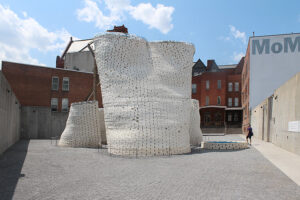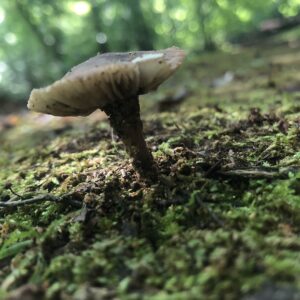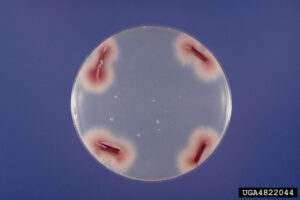
Mentioning modern architecture may evoke images of Frank Lloyd Wright’s masterpieces in some people or sweeping skyscrapers in others, but architect David Benjamin, the winner of MoMA PS1’s Young Architects Program 2014 competition, pictures looming structures constructed from fungi. Recently, fungi have been receiving attention as attractive materials for sustainable building practices. Engineers, architects, and scientists have developed mycelium bricks and explored potential uses of fungi for self-healing buildings.

When we consider fungi, we often think of their fruiting bodies, like mushrooms. However, fungi are mostly made up of mycelium, a sprawling rootlike system that provides nutrients and performs other critical tasks for the fungus. The fungi’s mycelium, not mushrooms, is typically used in fungi brick manufacturing. To nurture a mycelium brick, engineers make a mold of the desired brick shape, fill it with a wood byproduct like sawdust, and let the fungi eat away at the substrate until it has grown into the shape of the mold. Then the fungi brick is baked to maintain its shape and prevent it from continuing to grow.
These mycelium bricks have many advantages over clay bricks. Their substrate is usually made from salvaged wood waste or agricultural byproducts that would otherwise be discarded. The bricks are completely biodegradable, although you can imagine this may also cause long-term problems. These bricks are somewhat fire, water, and mold resistant and can be better insulators than fiberglass. Despite being 60 times lighter than standard clay brick, mycelium bricks are stronger than concrete. They are relatively cheap and quick to produce. These bricks can easily bond together in mere hours if the mycelium is left to grow between bricks.

Mycelium’s propensity to grow and bond quickly also makes it a powerful tool for self-healing buildings. Some scientists are forgoing mycelium bricks altogether and instead using fungi to spot treat concrete cracks. Scientists grew a fungus, Fusarium oxysporum, which is water-resistant and has a neat ability to deposit hardened minerals through a process called biomineralization. After growing on concrete for 4 days, the fungus spread to 86 times its initial surface area and produced minerals that could fill in the cracks of the cement and chemicals that increased the water-resistance of the concrete. While this technology is still in its infancy, it has very promising implications. Some scientists have even gone a step further and constructed a living fungal structure that can self-heal.

We are still decades away from neighborhoods lined with mycelium brick houses since fungi-based architecture faces numerous challenges. Each fungi species has different material properties, so determining the best mycelium building material is far from complete and may be different depending on the climate. Currently, mycelium bricks are estimated to last about two decades, and unfavorable pH levels and moisture can shorten the lifespan of a brick. Weatherproofing these fungal bricks poses unique challenges. Much of the motivation behind the development of these mycelium bricks is to construct biodegradable bricks, and many water-resistant sealants, such as polyurethane would prevent the brick from being compostable. Additionally, for many people the idea of their living space being occupied or constructed from fungi is unappealing, and challenging public perception of fungi remains a large obstacle. Despite these hurdles, fungi-based construction is constantly evolving. In the meantime, this ‘mycotecture’ technology is already being implemented from interior supporting structures, insulation, and temporary event spaces to compostable packaging, leather, and more.
Peer Edited By: Honorée Brewton
Really advanced technology